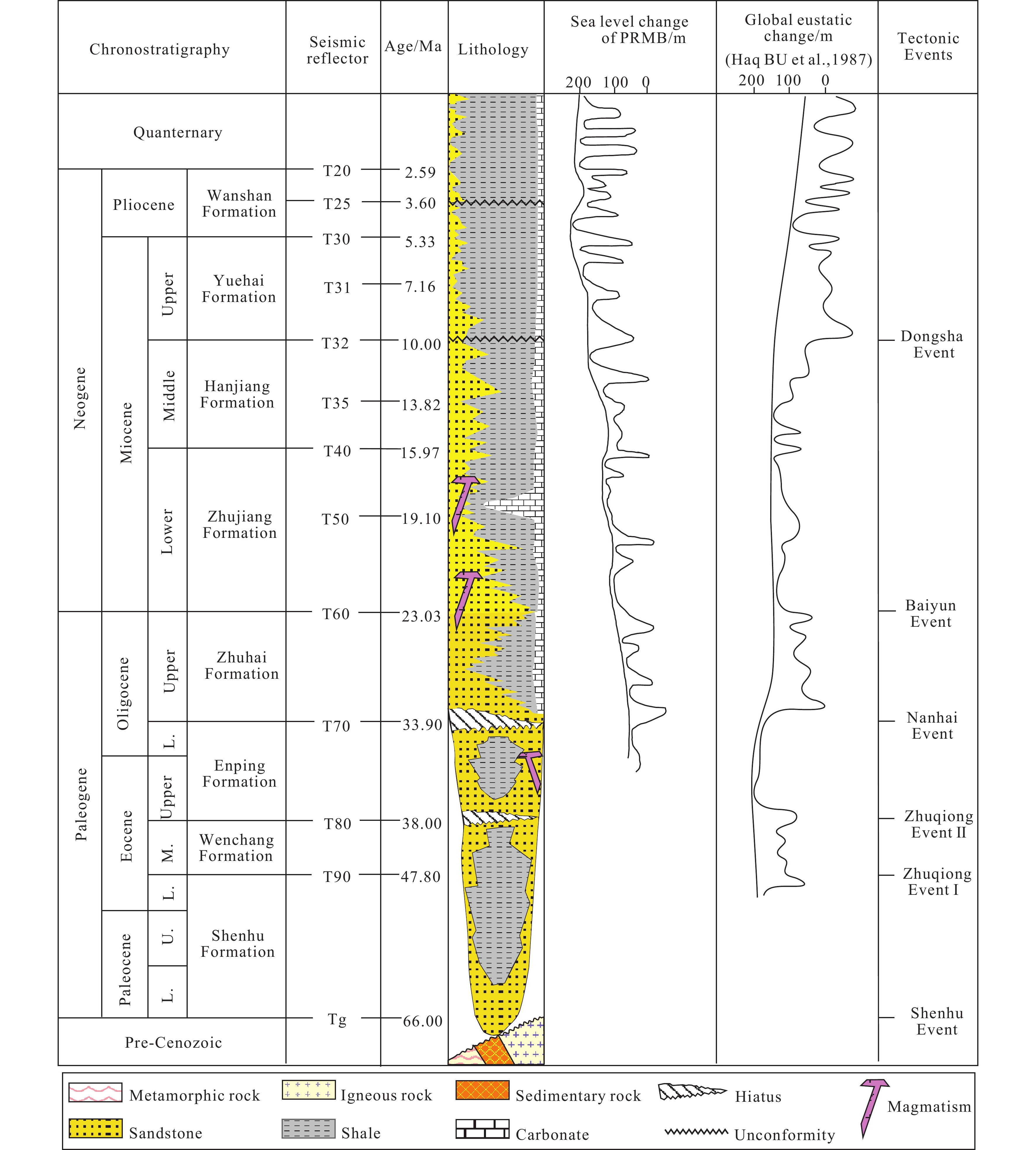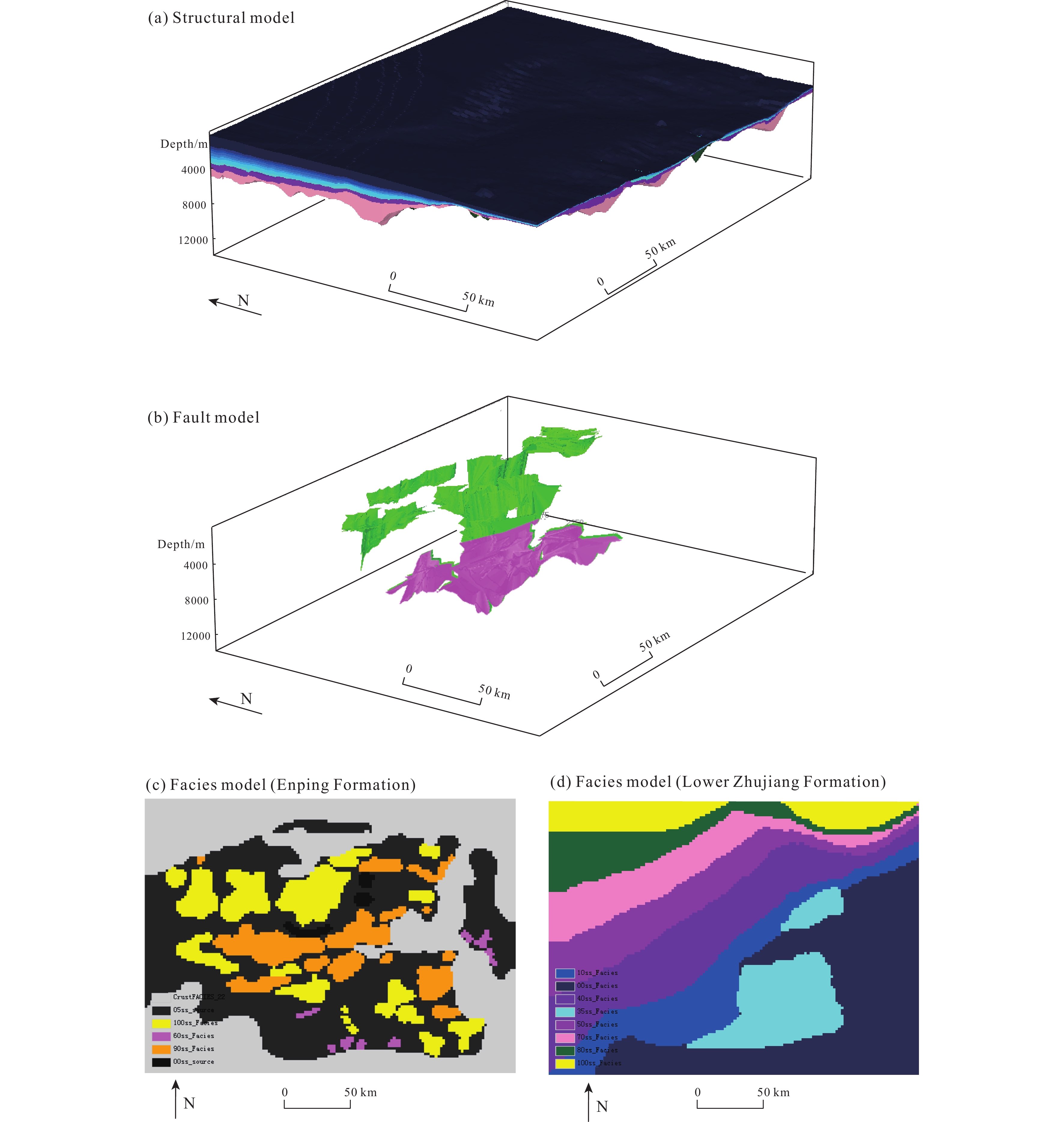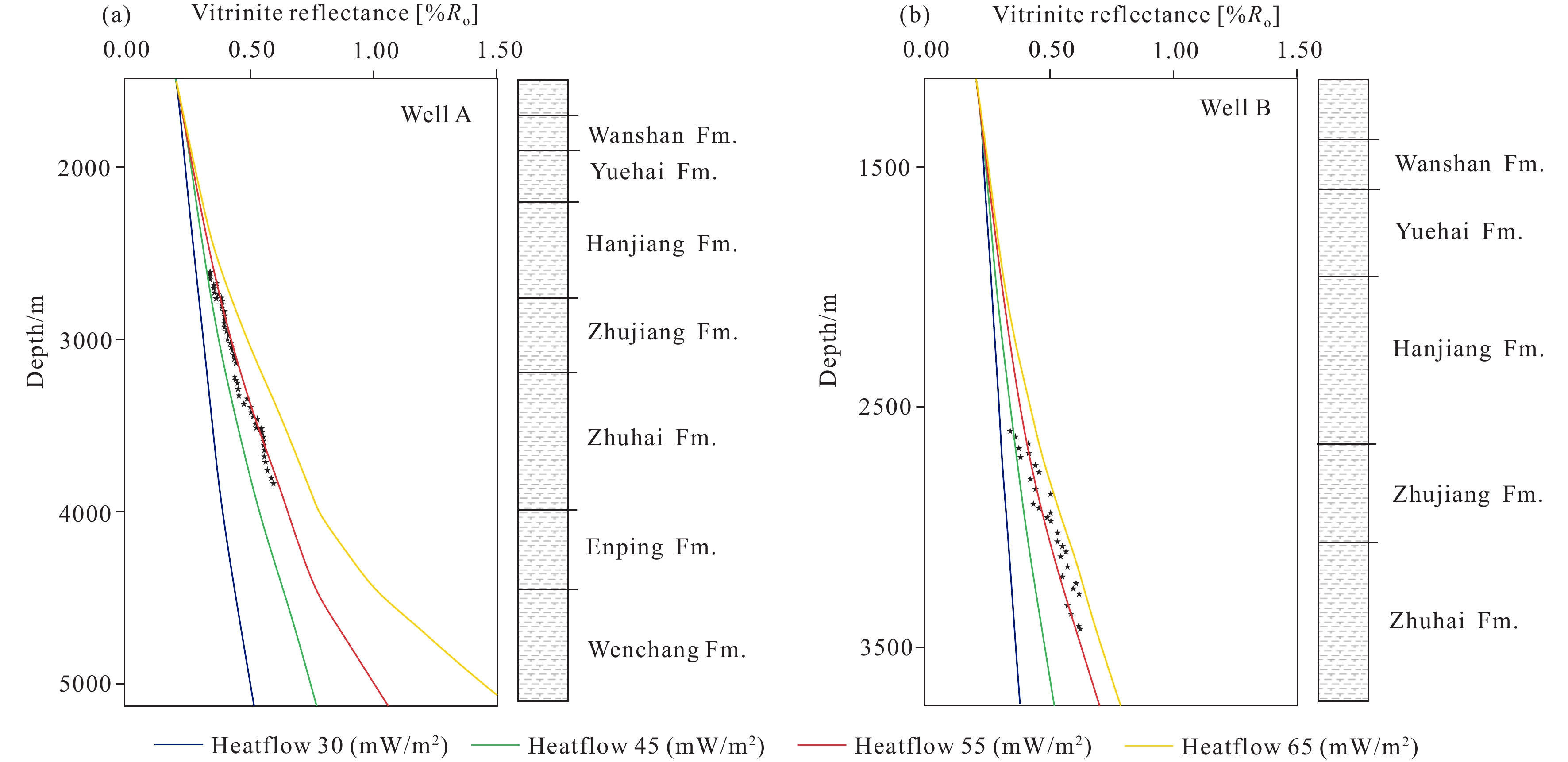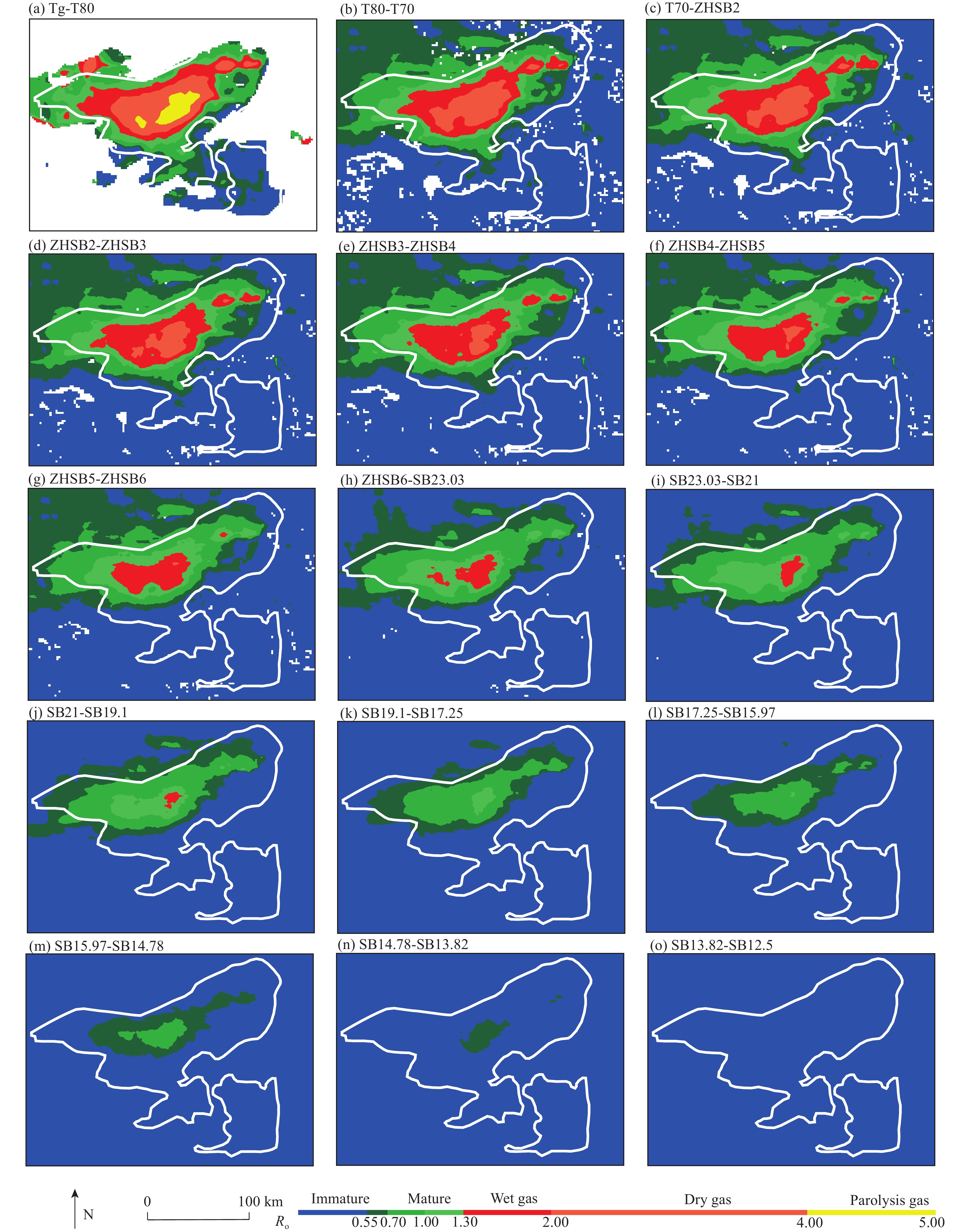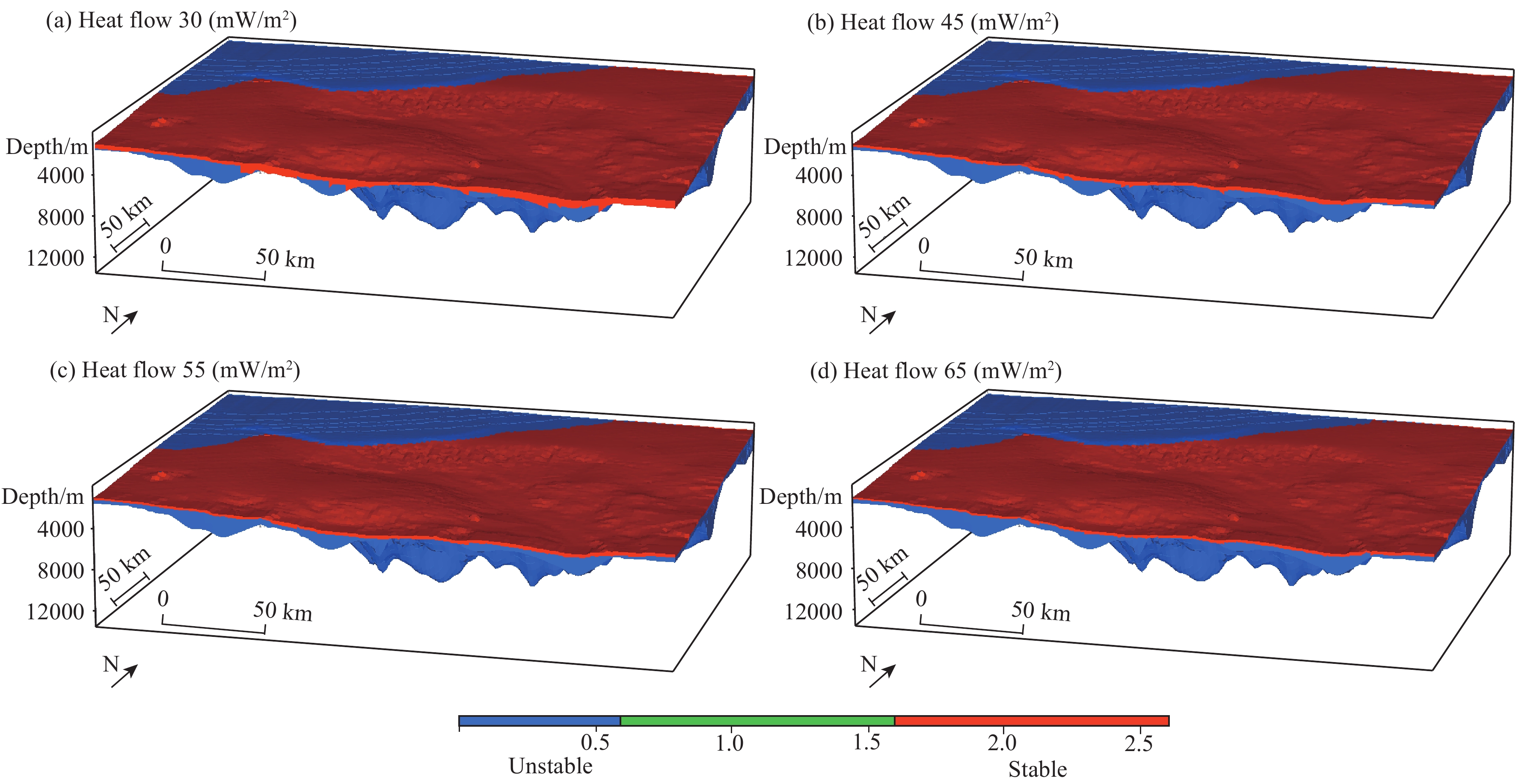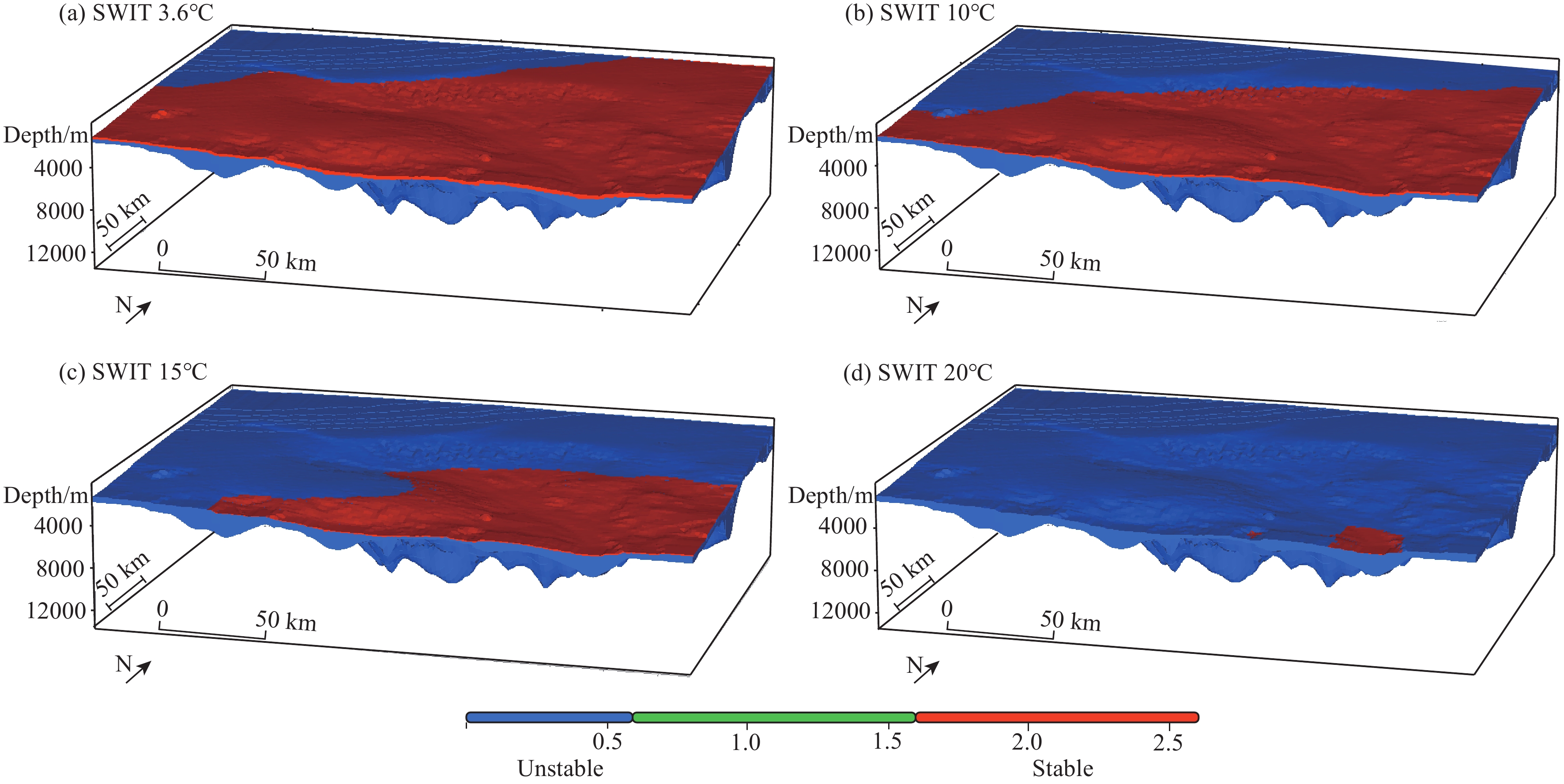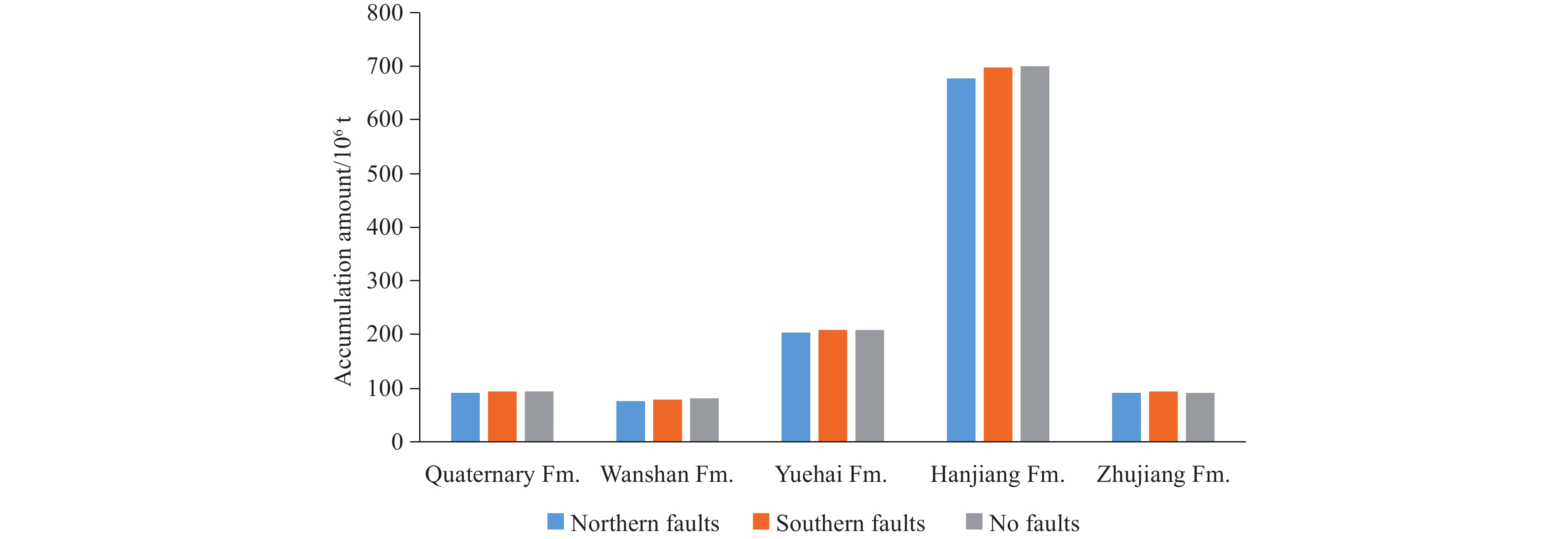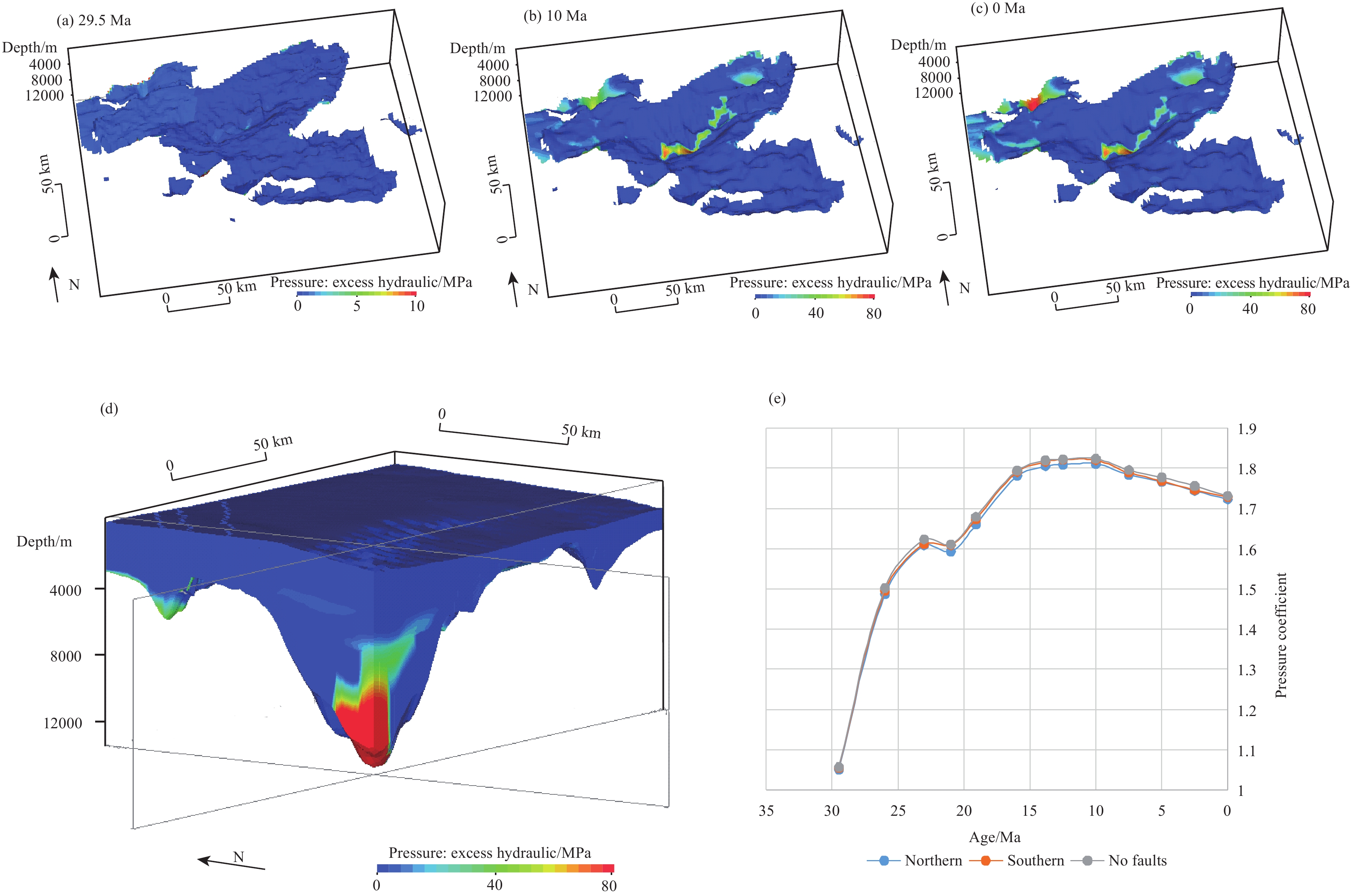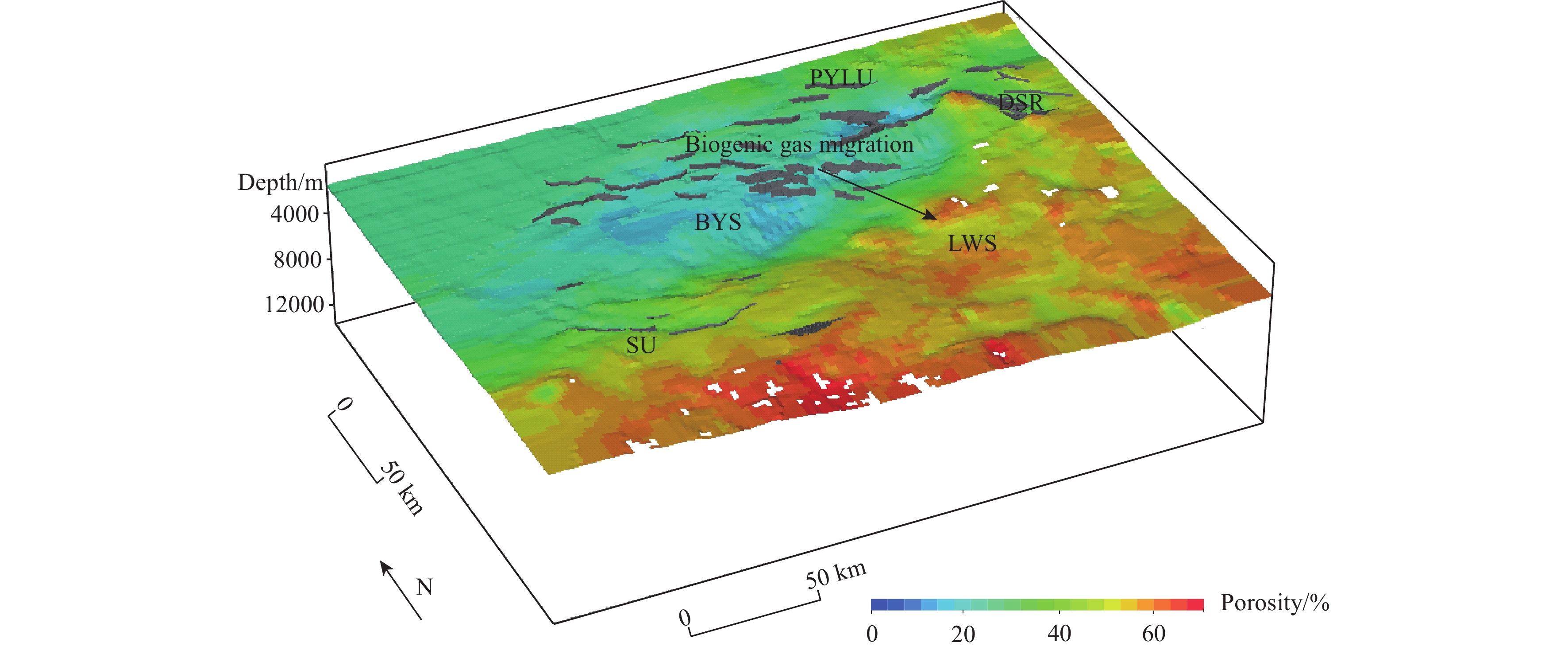| Citation: | Zhi-yuan Xie, Jian-gong Wei, Jin-yun Zheng, Zhen Sun, Kun Zhang, 2022. A 3D basin modeling study of the factors controlling gas hydrate accumulation in the Shenhu Area of the South China Sea, China Geology, 5, 218-233. doi: 10.31035/cg2022012 |
A 3D basin modeling study of the factors controlling gas hydrate accumulation in the Shenhu Area of the South China Sea
-
Abstract
Great advancement has been made on natural gas hydrates exploration and test production in the northern South China Sea. However, there remains a lot of key questions yet to be resolved, particularly about the mechanisms and the controls of gas hydrates enrichment. Numerical simulaution would play signficant role in addressing these questions. This study focused on the gas hydrate exploration in the Shenhu Area, Northern South China Sea. Based on the newly obtained borehole and multichannel reflection seismic data, the authors conducted an integrated 3D basin modeling study on gas hydrate. The results indicate that the Shenhu Area has favorable conditions for gas hydrate accumulation, such as temperature, pressure, hydrocarbon source, and tectonic setting. Gas hydrates are most concentrated in the Late Miocene strata, particularly in the structual highs between the Baiyun Sag and the Liwan Sag, and area to the south of it . It also proved the existence of overpressure in the main sag of source rocks, which was subject to compaction disequilibrium and hydrocarbon generation. It also shown that the regional fault activity is not conducive to gas hydrate accumulation due to excess gas seepage. The authors conjecture that fault activity may slightly weaken overpressure for the positive effect of hydrocarbon expulsion and areas lacking regional fault activity have better potential.
-

-
References
Brogi A. 2008. Fault zone architecture and permeability features in siliceous sedimentary rocks: Insights from the Rapolano geothermal area (Northern Apennines, Italy). Journal of Structural Geology, 30(2), 237–256. doi: 10.1016/j.jsg.2007.10.004. Brown HE, Holbrook WS, Hornbach MJ, Nealon J. 2006. Slide structure and role of gas hydrate at the northern boundary of the Storegga Slide, offshore Norway. Marine Geology, 229, 179–186. doi: 10.1016/j.margeo.2006.03.011. Collett T, Lee MW, Zyrianova MV, Mrozewski SA, Guerin G, Cook AE, Goldberg DS. 2012. Gulf of Mexico gas hydrate joint industry project leg II logging-while-drilling data acquisition and analysis. Marine and Petroleum Geology, 34(1), 41–61. doi: 10.1016/j.marpetgeo.2011.08.003. Cook AE, Goldberg D, Kleinberg RL. 2008. Fracture-controlled gas hydrate systems in the northern Gulf of Mexico. Marine and Petroleum Geology, 25(9), 932–941. doi: 10.1016/j.marpetgeo.2008.01.013. Cui YD, Lu C, Wu MT, Peng Y, Yao YB, Luo WJ. 2018. Review of exploration and production technology of natural gas hydrate. Advances in Geo-Energy Research, 2(1), 53–62. doi: 10.26804/ager.2018.01.05. Feng D, Qiu JW, Hu Y, Peckmann J, Guan HX, Tong HP, Chen C, Chen JX, Gong SG, Li N, Chen DF. 2018. Cold seep systems in the South China Sea: An overview. Journal of Asian Earth Sciences, 168, 3–16. doi: 10.1016/j.jseaes.2018.09.021. Fu N, Mi LJ, Zhang GC. 2007. Source rocks and origin of oil and gas in the northern Baiyun Depression of Pearl River Mouth Basin. Acta Petrolei Sinica, 28(3), 32–38 (in Chinese with English abstract). Fujii T, Aung TT, Wada N, Komatsu Y, Suzuki K, Ukita T, Wygrala B, Fuchs T, Rottke W, Egawa K. 2016. Modeling gas hydrate petroleum systems of the Pleistocene turbiditic sedimentary sequences of the Daini-Atsumi area, eastern Nankai Trough, Japan. Interpretation, 4(1), SA97–SA113. doi: 10.1190/INT-2015-0022.1. Ge Q, Wang JS, Xiang H, Hu GW. 2006. Computation of thickness of gas hydrate stability zone and potential volume of gas hydrate in South China Sea. Earth Science: Journal of China University of Geoscience, 31(2), 245–249 (in Chinese with English abstract). Ghori KAR, Mory AJ, Iasky RP. 2005. Modeling petroleum generation in the Paleozoic of the Carnarvon Basin, Western Australia: Implications for prospectivity. AAPG Bulletin, 89(1), 27–40. doi: 10.1306/08150403134. Guan HX, Zhang M, Mao SY, Wu NY, Lu HF, Chen DF. 2016. Methane seepage in the Shenhu area of the northern South China Sea: Constraints from carbonate chimneys. Geo-Marine Letters, 36, 175–186. doi: 10.1007/s00367-016-0438-6. Gusterhuber J, Hinsch R, Sachsenhofer R. 2014. Evaluation of hydrocarbon generation and migration in the Molasse fold and thrust belt (Central Eastern Alps, Austria) using structural and thermal basin models. AAPG Bulletin, 98(2), 253–277. doi: 10.1306/06061312206. Haq BU, Hardenbol J, Vail PR. 1987. Chronology of fluctuating sea levels since the Triassic. Science, 235(4793), 1156–1167. doi: 10.1126/science.235.4793.1156. Harris R, Yamano M, Kinoshita M, Spinelli G, Hamamoto H, Ashi J. 2013. A synthesis of heat flow determinations and thermal modeling along the Nankai Trough, Japan. Journal of Geophysical Research: Solid Earth, 118(6), 2687–2702. doi: 10.1002/jgrb.50230. Hyndman R, Spence G. 1992. A seismic study of methane hydrate marine bottom simulating reflectors. Journal of Geophysical Research, 97(B5), 6683–6698. doi: 10.1029/92JB00234. Judd A, Hovland M. 2007. Seabed fluid flow: The impact on geology, biology and the marine environment. New York, Cambridge University Press, 290‒322. Kong LT, Chen HH, Ping HW, Zhai PQ, Liu YH, Zhu JZ. 2018. Formation pressure modeling in the Baiyun sag, northern South China Sea: Implications for petroleum exploration in deep-water areas. Marine and Petroleum Geology, 97, 154–168. doi: 10.1016/j.marpetgeo.2018.07.004. Kroeger KF, Crutchley GJ, Kellett R, Barnes PM. 2019. A 3-d model of gas generation, migration, and gas hydrate formation at a young convergent margin (Hikurangi margin, New Zealand). Geochemistry, Geophysics, Geosystems, 20, 5126‒5147. doi: 10.1029/2019GC008275. Kroeger KF, Plaza-Faverola A, Barnes PM, Pecher IA. 2015. Thermal evolution of the New Zealand Hikurangi subduction margin: Impact on natural gas generation and gas hydrate formation‒A model study. Marine and Petroleum Geology, 63, 97–114. doi: 10.1016/j.marpetgeo.2015.01.020. Kuhn PP, Primio R, Hill R, Lawrence JR, Horsfield B. 2012. Three-dimensional modeling study of the low-permeability petroleum system of the Bakken Formation. AAPG Bulletin, 96(10), 1867–1897. doi: 10.1306/03261211063. Kvenvolden K. 1993. Gas hydrates e geological prospective and global change. Reviews of Geophysics, 31(2), 173–187. doi: 10.1029/93RG00268. Lampe C, Song GQ, Cong LZ, Mu X. 2012. Fault control on hydrocarbon migration and accumulation in the Tertiary Dongying depression, Bohai Basin, China. AAPG Bulletin, 96(6), 983–1000. doi: 10.1306/11031109023. Langhi L, Zhang YH, Gartrell AP, Underschultz J, Dewhurst D. 2010. Evaluating hydrocarbon trap integrity during fault reactivation using geomechanical three-dimensional modeling: An example from the Timor Sea, Australia. AAPG Bulletin, 94(4), 567–591. doi: 10.1306/10130909046. Lee JY, Kim GY, Kang NK, Yi BY, Jung JW, Im JH, Son BK, Bahk JJ, Chun JH, Ryu BJ, Kim DS. 2013. Physical properties of sediments from the Ulleung Basin, East Sea: Results from second Ulleung basin gas hydrate drilling expedition, East Sea (Korea). Marine and Petroleum Geology, 47(11), 43–55. doi: 10.1016/j.marpetgeo.2013.05.017. Li H, Tao H, Spence GD. 2014. North Cascadia heat flux and fluid flow from gas hydrates: Modeling 3-D topographic effects. Journal of Geophysical Research, 119(1), 99–115. doi: 10.1002/2013JB010101. Li JF, Ye JL, Qin XW, Qiu HJ, Wu NY, Lu HL, Xie WW, Lu JG, Peng F, Xu ZQ, Lu C, Kuang ZG, Wei JG, Liang QY, Lu HF, Kou BB. 2018. The first offshore natural gas hydrate production test in South China Sea. China Geology, 1, 5–19. doi: 10.31035/cg2018003. Li YL, Liu LL, Jin YR, Wu NY. 2021. Characterization and development of natural gas hydrate in marine clayey-silt reservoirs: A review and discussion. Advances in Geo-Energy Research, 5(1), 75–86. doi: 10.46690/ager.2021.01.08. Liu BJ, Pang X, Yan CZ, Lian SY, Liu J, He M, Shen J, Han JY, Li YP. 2011. An analysis of depositional evolution and its controls in Baiyun deep water area, Pearl River Mouth basin. China Offshore Oil and Gas, 23(1), 19–25 (in Chinese with English abstract). Liu LL, Liu CL, Wu NY, Ruan HL, Zhang YC, Hao XL, Bu QT. 2021. Advances in pressure core transfer and testing technology of offshore hydrate-bearing sediments. Geological Bulletin of China, 40(2‒3), 408‒422 (in Chinese with English abstract). Magara K. 1978. Compaction and Fluid Migration. Elsevier, 87–98. Mckenzie D. 1978. Some remarks on the development of sedimentary basins. Earth and Planetary Science Letters, 40, 25–32. doi: 10.1016/0012-821X(78)90071-7. Merey S, Longinos SN. 2019. The gas hydrate potential of the Eastern Mediterranean basin. Bulletin of the Mineral Research and Exploration, 160, 117–134. doi: 10.19111/bulletinofmre.502275. Pang X, Chen CM, Peng DJ, Ming Z, Su Y, Min H, Shen J. 2007. Sequence stratigraphy of Pearl River Deep-water Fan System in the South China Sea. Earth Science Frontiers, 14(1), 220–229 (in Chinese with English abstract). doi: 10.1016/S1872-5791(07)60010-4. Pang X, Chen CM, Shi HS. 2005. Response between relative sealevel change and the Pearl River deep water fan system in the South China Sea. Earth Science Frontiers, 12(3), 167–177 (in Chinese with English abstract). Pang X, Chen CM, Zhu M. 2006. A discussion about hydrocarbon accumulation conditions in Baiyun Deep-water Area, the northern continental slope, South China Sea. China Offshore Oil and Gas, 18(3), 145–149 (in Chinese with English abstract). Piñero E, Hensen C, Haeckel M, Rottke W, Fuchs T, Wallmann K. 2016. 3-D numerical modelling of gas hydrate accumulations using PetroMod. Marine and Petroleum Geology, 71, 288–295. doi: 10.1016/j.marpetgeo.2015.12.019. Qiu ZY, Han XQ, Wang YJ. 2018. Methane seepages in the northern South China Sea: Evidence from in situ measurements. Journal of Oceanology and Limnology, 36(5), 1556–1561. doi: 10.1007/s00343-018-7052-6. Riedel M, Collett TS, Kumar P, Sathe AV, Cook A. 2010. Seismic imaging of a fractured gas hydrate system in the Krishna‒Godavari Basin offshore India. Marine and Petroleum Geology, 27(7), 1476–1493. doi: 10.1016/j.marpetgeo.2010.06.002. Ruppel CD, Kessler JD. 2017. The interaction of climate change and gas hydrates. Reviews of Geophysics, 55, 126–168. doi: 10.1002/2016RG000534. Shaibu R, Sambo C, Guo BY, Dudun A. 2021. An assessment of methane gas production from natural gas hydrates: Challenges, technology and market outlook. Advances in Geo-Energy Research, 5(3), 318–332. doi: 10.46690/ager.2021.03.07. Shi XB, Yu CH, Chen M, Yang XQ, Zhao JF. 2017. Analyses of variation features and influential factors of heat flow in the northern margin of the South China Sea. Earth Science Frontiers, 24(3), 56–64 (in Chinese with English abstract). Sloan ED. 2003. Fundamental principles and applications of natural gas hydrates. Nature, 426, 353–363. doi: 10.1038/nature02135. Su M, Yang R, Wang HB, Sha ZB, Liang JQ, Wu NY, Qiao SH. 2016. Gas hydrates distribution in the Shenhu area, Northern South China Sea: Comparisons between the eight drilling sites with gas hydrate petroleum system. Geologica Acta, 14(2), 79–100. doi: 10.1344/GeologicaActa2016.14.2.1. Su M, Yang R, Wu NY, Wang HB, Liang JQ, Sha ZB, Cong XR, Qiao SH. 2014. Structural characteristics in the Shenhu Area, northern continental slope of South China Sea, and their influences on gas hydrate. Acta Geologica Sinica, 88(3), 318–326 (in Chinese with English abstract). Su PB, Liang JQ, Peng J, Zhang W, Xu JH. 2018. Petroleum systems modeling on gas hydrate of the first experimental exploitation region in the Shenhu area, northern south China sea. Journal of Asian Earth Sciences, 168(DEC.), 57–76. doi: 10.1016/j.jseaes.2018.08.001. Su PB, Liang JQ, Sha ZB. 2011. Dynamic simulation of gas hydrate reservoirs in the Shenhu area, the northern South China Sea. Acta Petrolei Sinica, 32(2), 226–233 (in Chinese with English abstract). Su PB, Liang JQ, Zhang W, Liu F, Li TW, Wang FF, Wang XX. 2021. Numerical simulation of gas hydrate migration-accumulation system and trial mining optimization of orebodies in the Shenhu area. Geological Bulletin of China, 40(2‒3), 267‒279 (in Chinese with English abstract). Sun Z, Xu ZY, Sun LT, Pang X, Yan CZ, Li YP, Zhao ZX, Wang ZW, Zhang CM. 2014. The mechanism of post-rift fault activity in BYS, Pearl River Mouth basin. Journal of Asian Earth Sciences, 89(3), 76–87. doi: 10.1016/j.jseaes.2014.02.018. Swarbrick RE, Osborne MJ, Yardley GS. 2002. Comparision of overpressure magnitude resulting from the main generating mechanisms. In: Huffman A, Bowers G (Eds. ), Pressure Regimes in Sedimentary Basins and Their Prediction. AAPG Memoir 76, 1‒12. doi: 10.1306/M76870C1. Swarbrick RE, Osborne MJ. 1998. Mechanisms that generate abnormal, pressures: An overview. In: Law BE, Ulmishek GF, Slavin VI (Eds. ), Abnormal pressure in hydrocarbon environments. AAPG Memoir 70, 13‒34. doi: 10.1306/M70615C2. Wan XL, Li CH, Zhao MH, He EY, Liu SQ, Qiu XL, Lu Y, Chen N. 2019. Seismic velocity structure of the magnetic quiet zone and continent‒ocean boundary in the Northeastern South China Sea. Journal of Geophysical Research: Solid Earth, 124(11), 11866–11899. doi: 10.1029/2019JB017785. Wang JL, Wu SG, Kong X, Li QP, Wang JX, Ding R. 2018a. Geophysical characterization of a fine-grained gas hydrate reservoir in the Shenhu area, northern South China Sea: Integration of seismic data and downhole logs. Marine and Petroleum Geology, 92, 895–903. doi: 10.1016/j.marpetgeo.2018.03.020. Wang JL, Wu SG, Sun J, Feng WL, Li QP. 2021. Influence of seafloor topography on gas hydrate occurrence across a submarine canyon-incised continental slope in the northern margin of the south China sea. Marine and Petroleum Geology, 133, 105279. doi: 10.1016/j.marpetgeo.2021.105279. Wang JL, Wu SG, Yao YJ. 2018b. Quantifying gas hydrate from microbial methane in the South China Sea. Journal of Asian Earth Sciences, 168, 48–56. doi: 10.1016/j.jseaes.2018.01.020. Wang X, Wu S, Yuan S, Wang D, Ma Y, Yao G, Cong Y, Zhang G. 2010. Geophysical signatures associated with fluid flow and gas hydrate occurrence in a tectonically quiescent sequence, Qiongdongnan Basin, South China Sea. Geofluids, 10, 351–368. doi: 10.1111/j.1468-8123.2010.00292.x. Wei JG, Fang YX, Lu HL, Lu HF, Lu JA, Liang JQ, Yang SX. 2018. Distribution and characteristics of natural gas hydrates in the Shenhu sea area, South China sea. Marine and Petroleum Geology, 98, 622–628. doi: 10.1016/j.marpetgeo.2018.07.028. Wei JG, Li JW, Wu TT, Zhang W, Li JT, Wang JL, Tao J, Chen ZH, Wu ZJ, Chen WL. 2020. Geologically controlled intermittent gas eruption and its impact on bottom water temperature and chemosynthetic communities‒A case study in the “HaiMa” cold seeps, South China Sea. Geological Journal, 55(9), 6066–6078. doi: 10.1002/gj.3780. Wei JG, Liang JQ, Lu JA, Zhang W, He YL. 2019. Characteristics and dynamics of gas hydrate systems in the northwestern south China sea‒results of the fifth gas hydrate drilling expedition. Marine and Petroleum Geology, 110, 287–298. doi: 10.1016/j.marpetgeo.2019.07.028. Wei JG, Yang L, Liang QY, Liang JQ, Lu JA, Zhang W, Zhang XR, Lu XB. 2021, Geomechanical properties of gas hydrate-bearing sediments in Shenhu Area of the South China Sea. Energy Reports, 7, 8013‒8020. doi: 10.1016/j.egyr.2021.05.063. Wu SG, Gao JW, Zhao SJ, Lüdmann T, Chen DX, Spence G. 2014. Post-rift uplift and focused fluid flow in the passive margin of Northern South China Sea. Tectonophysics, 615‒616, 27‒39. doi: 10.1016/j.tecto.2013.12.013. Xie H, Zhou D, Li YP, Pang X, Li PC, Chen GH, Li FC, Cao JH. 2014. Cenozoic tectonic subsidence in deepwater sags in the Pearl River Mouth Basin, northern South China Sea. Tectonophysics, 615‒616, 182‒198. doi: 10.1016/j.tecto.2014.01.010. Xie ZY, Li YP, Sun Z, Sun LT, Qiu N, Yang JM. 2015. A basin modeling study on the coupling of fault activity and hydrocarbon accumulation in the Baiyun Sag. Journal of Tropical Oceanography, 34(1), 30–41 (in Chinese with English abstract). Xie ZY, Sun LT, Pang X, Zheng JY, Sun Z. 2017. Origin of the Dongsha event in the south China sea. Marine Geophysical Research, 38(4), 357–371. doi: 10.1007/s11001-017-9321-8. Xu HN, Xing T, Wang JS, Li LQ, Liang BW, Shu H, Zhang M. 2012. Detecting seepage hydrate reservoir using multi-channel seismic reflecting data in Shenhu area. Journal of Earth Science-China, 37, 195–202 (in Chinese with English abstract). Yang Y, He YB, Zheng QL. 2017. An analysis of the key safety technologies for natural gas hydrate exploitation. Advances in Geo-Energy Research, 1(2), 100–104. doi: 10.26804/ager.2017.02.05. Yu XH, Wang JZ, Liang JQ, Li SL, Zeng XM, Li W. 2014. Depositional characteristics and accumulation model of gas hydrates in northern South China Sea. Marine and Petroleum Geology, 56, 74–86. doi: 10.1016/j.marpetgeo.2014.03.011. Yuan YS, Zhu WL, Mi LJ, Zhang GC, Hu SB, He LJ. 2009. “Uniformgeothermal gradient” and heat flow in the Qiongdongnan and Pearl River Mouth Basins of the South China Sea. Marine and Petroleum Geology, 26, 1152–1162. doi: 10.1016/j.marpetgeo.2008.08.008. Zhang K, Song H, Sun S, Gao J. 2020. Distribution and genesis of submarine landslides in the northeastern South China Sea. Geological Journal, 56(3), 1187–1201. doi: 10.1002/gj.3996. Zhang XD, Yin C, Zeng FX, Zhao B. 2021. Collective fluid flow system and its implications for gas hydrate accumulation in the north slope of the South China Sea. Geological Bulletin of China, 40(2‒3), 280‒286 (in Chinese with English abstract). Zhao Z, Zhou D, Liao J. 2010. Lithospheric stretching modeling of the continental shelf in the Pearl River Mouth Basin and analysis of post-breakup subsidence. Acta Geologica Sinica, 84(8), 1135–1145 (in Chinese with English abstract). -
Access History

-
Figure 1.
Geological map of the study area (white rectangle represents the basin modeling area). BYS‒Baiyun Sag; LWS‒Liwan Sag; NU‒Northern Uplift; SU‒Southern Uplift; DSR‒Dongsha Rise; CSD‒Chaoshan Depression; PYLU‒Panyu Low Uplift; SHU‒Shenhu Uplift; ZHU I D‒ZHU I Depression; ZHU II D‒ZHU II Depression; ZHU III D‒ZHU III Depression. Yellow solid lines represents the seismic lines and the red dotted curve marks the continental-ocean boundary.
-
Figure 2.
The structural sedimentary framework of the Shenhu Area (after Pang X et al., 2007; Xie ZY et al., 2017). L.‒Lower; U.‒Upper; M.‒Middle.
-
Figure 3.
Structural model, fault model, and facies model of the Shenhu Area (in Fig. a , the deep layers of souce rocks are shown in purple and pink colors, and the overlying sedimentary layers are shown in blue colors; in Fig. b, the northern faults and southern faults are shown in green and pink colors).
-
Figure 4.
Ro calibration of the boreholes (the boreholes’ locations are in Fig. 1; black dots represent measured vitrinite reflectance, and solid lines denote the model result of vitrinite reflectance). Fm‒Formation.
-
Figure 5.
The maturity distribution of the sedimentary units in Shenhu Area, South China Sea.
-
Figure 6.
GHSZ distribution under different heat flows.
-
Figure 7.
GHSZ distribution under different SWITs.
-
Figure 8.
GHSZ transect in the Shenhu Area, South China Sea.
-
Figure 9.
The relationship between faults and gas hydrate accumulation (upper Hanjiang Formation).
-
Figure 10.
The amount of gas hydrate accumulation in the different layers in Shenhu Area, South China Sea.
-
Figure 11.
Overpressure evolution in the Shenhu Area, South China Sea. a‒c‒denote the overpressure distribution in Wenchang Formation in the different historical periods; d‒shows the 3D view of overpressure; e‒shows the pressure coefficient in the central main sag in Wenchang Formation for different fault models.
-
Figure 12.
The favorable drilling sites in Shenhu Area, South China Sea. The area in light grey color represents the BSR by Yu XH et al. (2014) in Fig. a.
-
Figure 13.
Schematic of biogenic gas migration in the Shenhu Area, South China Sea. The base map shows the porosity of the upper Hanjiang Formation (SB13.82‒SB12.50), and faults are shown in grey polylines.BYS‒Baiyun Sag; LWS‒Liwan Sag; SU‒Southern Uplift; DSR‒Dongsha Rise.
-
Figure 14.
Interpreted seismic profiles along with L1 and L2 (L1 and L2 are shown in Fig. 1). Horizontal lines represent identified seismic sequences, and red inclined lines represent identified faults.

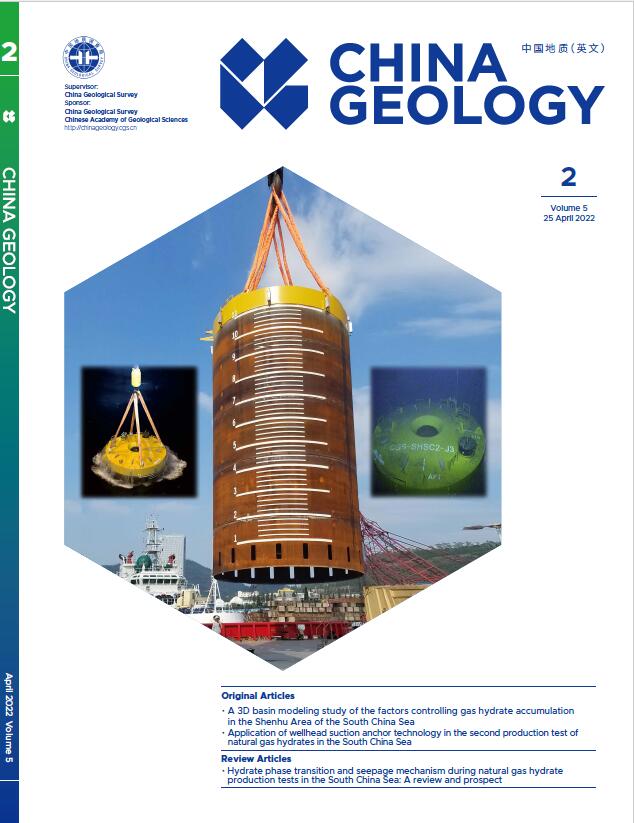



 DownLoad:
DownLoad:
